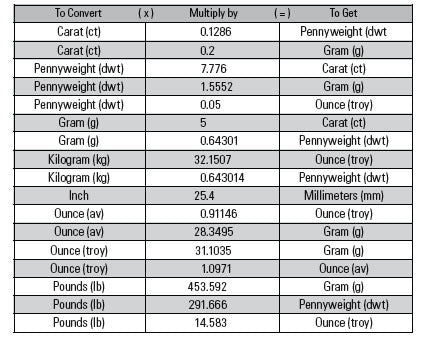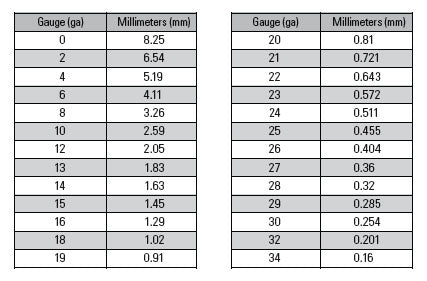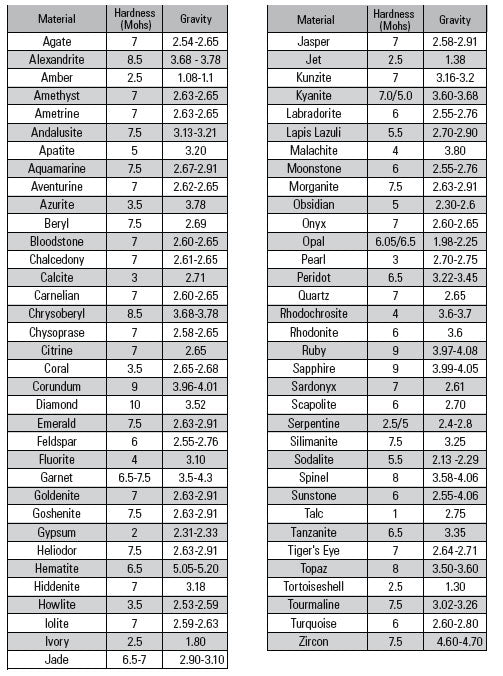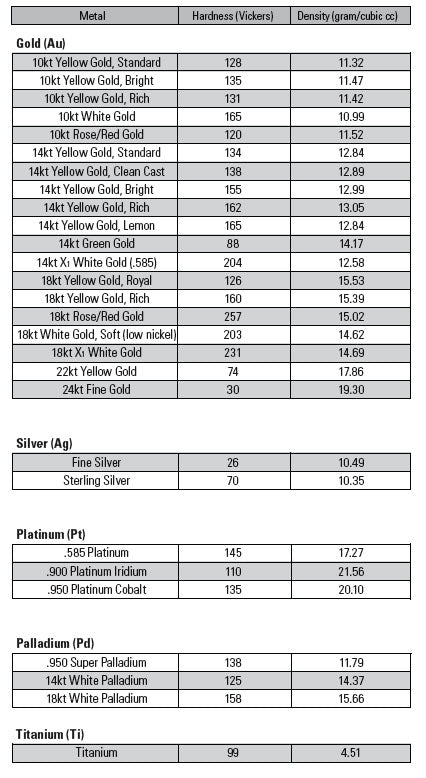1-Round Diamond Carats to Millimeters Conversion Chart:
By using the information below, you can measure the weight of your diamond by measuring its diameter, assured that it has normal proportions. Some diamonds have proportions that are not optimal. Having a diamond with high depth ratio is not advised due to that same reason. Those diamonds usually have small table measurements, making them reflecting less brilliance.

2-Weights and Measurements Conversion Chart:
Below chart helps you convert different weights. European weight system is based on grams and kilos while troy weight is used in U.S.A. Pennyweight (Or Deadweight) is the most common weight scale used among American jewelers.

3-Metal Gauge Conversion Chart:
The following chart helps you identify how thick is your pendants such as dog tags, name plates etc. As the gauge becomes smaller, they become tinier and easier to bend. Pendants with thicker gauge is heavier, more costly but they are sturdier.
We advise our customers who wish to buy dog tags to choose the thickest gauge options we stock..

4- Gemstone Hardness Scale and Specific Gravity:
Every gemstone has different hardness. Some may be easily broken or carved while some cannot have scratches even. The following chart displays the hardness of major gemstones in terms of Mohs scale.

5-Metal Hardness and Specific Gravity:
Metals composition elements let them have different hardness grades. The following chart displays hardness and density of major metal types used in jewelry manufacturing.

Osmium (not listed above) is the element in the world with highest density. Symbol Os is a transition metal having an atomic number of 76, an atomic weight of 190.23 g / mol, a melting point of 3045.0 ° C, and a boiling point of 5027.0 ° C. It has the property of being the heaviest density metal known at room temperature with 22.59 g / cm³. It is silverish color.
The name of the element osmium is called osmë, which means the Greek smell. It is rarely used purely because osmium oxide is poisonous. It is usually used in alloys. The most commonly used things are used in the construction of phonograph needles, fountain pen tips and the like.
A look at the weight is also a density. Mass is the volume ratio of mass as it is known. Unit is g / cm³. When the elements are weighed and compared in term
